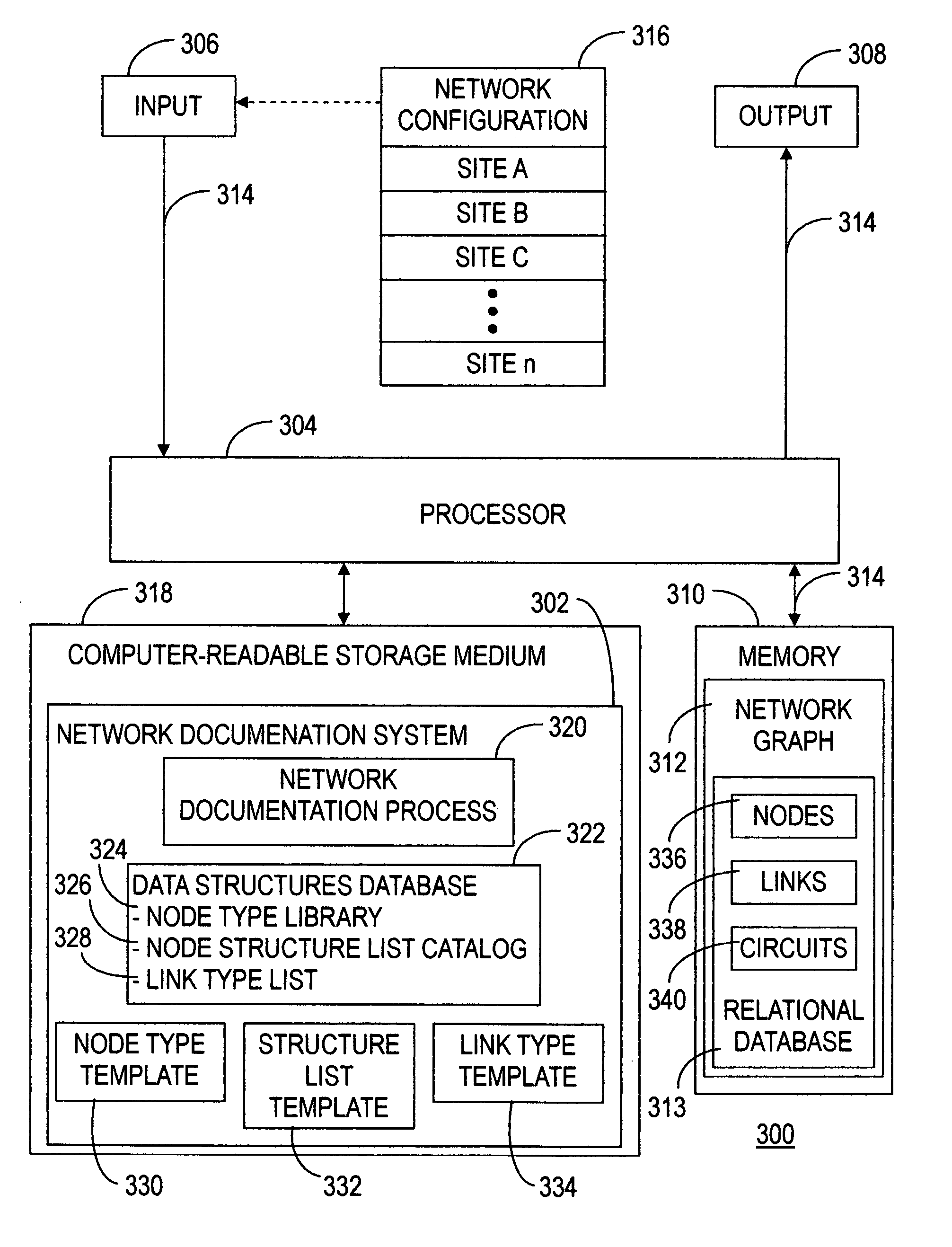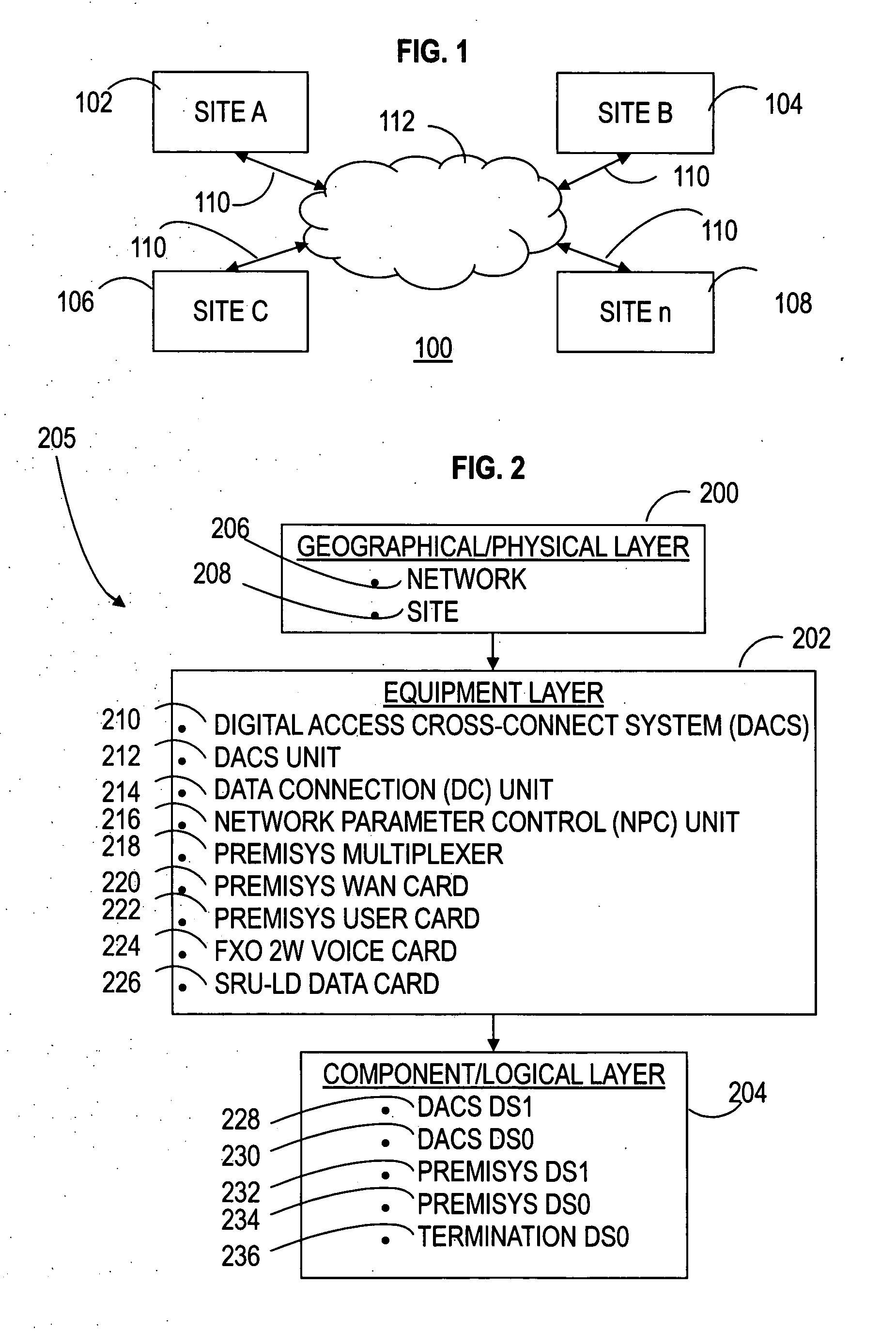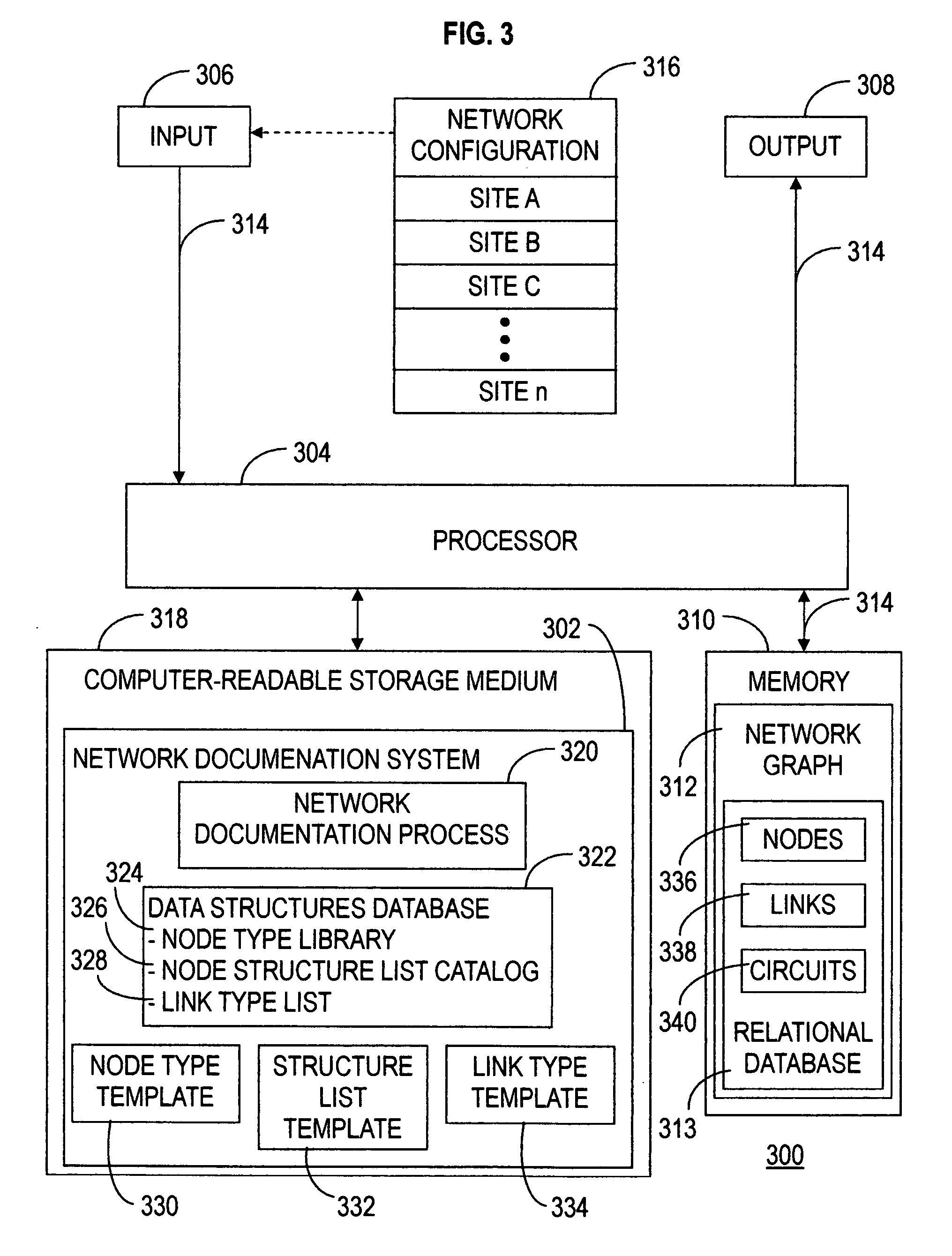Method for modeling and documenting a network
- Summary
- Abstract
- Description
- Claims
- Application Information
AI Technical Summary
Benefits of technology
Problems solved by technology
Method used
Image
Examples
Embodiment Construction
[0031] The present invention enables efficient modeling and documentation of elements and relationships in a network through the utilization of a common format. This common format allows for straightforward extension of a network model and network documentation.
[0032] The following is a glossary of terminology used herein:
[0033] Network: is any interconnected group or system. For example, a telecommunications network is a network of elements and connections arranged so that information may be passed from one part of the network to another.
[0034] Network Element: any physical or logical point of interest in a network.
[0035] Network Connection: a path between two directly connected network elements in a network.
[0036] Network Data Path: the route for information between two network elements in a network—particularly between two network elements that are not necessarily directly connected.
[0037] Site: is a geographic location in the network at which a collection of network elemen...
PUM
 Login to View More
Login to View More Abstract
Description
Claims
Application Information
 Login to View More
Login to View More - R&D
- Intellectual Property
- Life Sciences
- Materials
- Tech Scout
- Unparalleled Data Quality
- Higher Quality Content
- 60% Fewer Hallucinations
Browse by: Latest US Patents, China's latest patents, Technical Efficacy Thesaurus, Application Domain, Technology Topic, Popular Technical Reports.
© 2025 PatSnap. All rights reserved.Legal|Privacy policy|Modern Slavery Act Transparency Statement|Sitemap|About US| Contact US: help@patsnap.com



